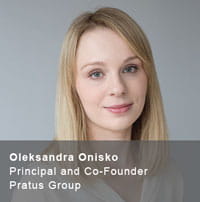Visioning session
Session duration: 1 – 2 hours
We’ll meet with your project lead, sustainability manager and a design team member to help define your project requirements and sustainability priorities.
In order to serve you better, please select your Enbridge Gas location services.
We noticed you are visiting from Utah, would you like to visit our Utah site?
Live energy modelling is a cornerstone of the free Savings by Design program. Participants provide preliminary project drawings and multi-disciplinary industry experts help your project team optimize design choices during a full-day Integrated Design Process workshop. Here, Pratus Group’s Oleksandra Onisko answers top questions about energy modelling for those new to the process.
Pratus Group’s Oleksandra Onisko answers questions about energy modelling for those new to the process.
Savings by Design program participants provide preliminary project drawings and multi-disciplinary industry experts help your project team optimize design choices during a full-day Integrated Design Process workshop.

 Q: Energy modelling typically costs thousands of dollars. Do we really need it?
Q: Energy modelling typically costs thousands of dollars. Do we really need it?A: Yes! With the Savings by Design program, the cost of preliminary energy modelling services is covered by Enbridge Gas.
There’s tremendous financial benefit, in terms of cost avoidance, in evaluating design options early. We’ve seen projects that have foregone energy modelling only to realize at the building permit stage or later that mandatory targets are not being met. Using energy modelling at the conceptual and schematic phases helps avoid these costly redesign scenarios.
A: The key is to engage the right experts and set your targets early on in the project. One of the most rewarding parts of my job is helping people solve problems and meet their performance targets. During the workshop, we break down in simple terms the energy, greenhouse gas emissions and utility cost impact of different energy conservation measures (ECM). Examples of ECMs include improved windows, increased insulation and thermally broken balconies. By analyzing and testing ECM options with real-time energy modelling, we provide data that project teams can actually use to make informed decisions. Following the workshop, participants also get a summary report to take home.
A: Any new construction project can benefit from simulations and collaborative design from the early stages. For many projects, it’s rare to have everyone who influences energy consumption in the same room. The workshop provides a really unique level of collaboration.
A: Our code is certainly more efficient than it was 10 years ago but it’s not enough to get us to our carbon reduction targets, provincially and federally. Reaching those targets requires increasing stringency of our codes and standards coupled with incentive programs that encourage and motivate higher levels of energy efficiency in our buildings.
Savings by Design gives your project team free access to industry experts, technical tools and financial incentives to help you build high-performance, resilient and sustainable buildings.
Session duration: 1 – 2 hours
We’ll meet with your project lead, sustainability manager and a design team member to help define your project requirements and sustainability priorities.
No cost | Workshop duration: 1 day
Your team will strategize with energy modellers and sustainable design experts to maximize your project’s energy and environmental performance at a full-day workshop facilitated by Sustainable Buildings Canada.
An energy model will be developed as well as a final report summarizing the options discussed and recommendations.

* This has no cash value. To qualify for the program, projects must be located in the Enbridge Gas service area. City of Toronto and City of Ottawa projects will target the achievement of higher energy performance. Participants must agree to all program terms and conditions, fully participate in all stages of the program and meet all program requirements.
Disclaimers:
Projected energy savings , cost and benefits are based on energy modelling simulations conducted during the Savings by Design Integrated Design Process Workshop. These projections are specific to this case, and actual savings may vary for each project. Any references to Greenhouse Gas Emissions (GHG) reductions are based on the assumption that participation results in reduced natural gas consumption. Enbridge Gas does not make any claims regarding the specific amount of GHG reductions achieved.